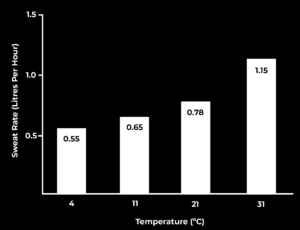Injury Prevention for Triathlon & Ironman Training
Team M:X member Mike James is a multiple Ironman, Double Ironman and Triple Ironman finisher who has competed and treated novice to elite athletes worldwide. Widely known as ‘The Endurance Physio’, he specialises in teaching athletes, coaches and therapists involved in endurance sports to optimise performance, reduce injury risk and maximise rehabilitation.
Introduction
The growth of triathlon over the last 20-40 years has been quite remarkable. Worldwide, on a seemingly daily basis, races and events continue to expand, training and technological information constantly allow athletes to learn more about the sport and athletes – new and old, of all abilities – hit the pools, lakes, roads and paths, determined to achieve the next race finish, personal best or goal.
In a sport laden with personal challenges and hurdles, the once almost mythical Ironman (IM) Distance remains the ultimate challenge for many. Whether winning world championships or merely crossing the line and collecting the fabled ‘M Dot’, the 2.4-mile swim, 112-mile bike and 26.2 mile run race is the pinnacle of many athletes’ journeys.
The sheer nature and demands of the event (all triathlon events in fact!) contribute to a high incidence of injury. A 2013 study of 174 long-distance triathletes over a 26-week period found that overuse injury was the prevalent injury amongst iron-distance triathletes. The average prevalence of overuse problem was 56% at any time, with a substantial problem incidence of 20%. The most prevalent sites were the knee (25%), lower leg (23%) and lower back (23%). The acute injury incidence was 0.97 per 1000 hours of training, and 1.02 per 1000 hours of competition.
So, how can we prevent, or more accurately perhaps, reduce the risk of encountering such problems and maximising our chances of getting to the start line and performing to the best of our abilities? These are The Endurance Physio’s top tips:
Goal Setting
This should be the first thing any IM or budding IM does. Ask yourself, what do I want to achieve? Are you aiming to simply get through the 140.6 miles and cross the finish line? Are you aiming for a specific time and/or PB? Some people are primarily entering the race to raise money/awareness for a charity. Before any plans can be formulated, you must understand what it is you are planning for. Every aspect of the coming 4-12 months will be determined by your goals. Duration, intensity, frequency of training, location, climate and course profile of the race may all be driven by timescales and events to do with your goal.
Take home messages:
1) Train wisely – increase the load on the body gradually. Factor in enough recovery – this is where we improve! Quality trumps quantity every time.
2) Get strong and stay strong! It can help performance and possibly injury.
3) Plan everything – the 5 P’s (Prior Planning Prevents Poor Performance!).
4) Be consistent, but flexible – anyone who achieved anything remarkable did it through consistency. Be the bamboo! Be committed and stick to your regime/plans. Always be prepared to bend a little if needed but get back on the plan as soon as possible.
And remember – whatever your goal, whatever your level, however many IM you have completed – enjoy it. It’s fun!






